When you’re working with devices that are mechanical in nature, it’s just a matter of time until you’re coming into contact with parts that spin. And sometimes you’ll want to know exactly how fast those parts are spinning. It’s all but impossible to accurately eye-ball even slow spinning objects, especially if you’re looking for real accuracy in your measurements, or you’re looking for subtle variations in speed. That means if you want to determine the angular momentum of some part, you’re going to need an instrument to help you measure.
That device is a tachometer. Although there’s a wide variety of ways to take these types of rotational readings, for most circumstances your best bet is a digital photo tachometer. That’s because it doesn’t have to make contact with the thing you’re trying to measure. Not having to make contact keeps your measurements more accurate, less intrusive, and generally far easier to perform.

Measurement Efficiency and Speed
Photo laser tachometers are also efficient because you don’t need to make any substantial changes to the systems you’re trying to measure. Laser tachometers use a laser, or similar light source, to shoot light towards the object you want to measure. That light is aimed at a reflective mark that you make on the object you want to measure. A spot of white paint on a gray metal shaft would work perfectly, provided that the rest of the shaft is relatively non-reflective relative to the white paint.
From there, you aim the laser at reflective spot you’ve made as the object rotates. Each time the spot you’ve marked passes the photo tachometer’s laser beam, some portion of that light will be reflected back towards the instrument. The reflected light gets picked up by waiting sensors, and the tachometer then only has to count how many times the sensor is triggered during some duration of time. And that’s it! You almost instantly have a highly accurate determination of rotational speed without so much as having to get your hands dirty.
Reflective Tape for Superior Measuring Angles
Of course, white paint isn’t an optimal solution in many cases. You probably don’t want to cover your engine in white paint every time you need to take a measurement. Thankfully, photo tachometers often include reflective tape that’s far more functional than paint because it’s reflective enough to allow you to measure a greater range of angles.
For example, in a real world test, it can be virtually impossible to use a tachometer on an engine because you can’t get a straight view of the crankshaft. But with reflective tape you’ll be able to point the tachometer at the engine from a higher angle, allowing you to get a clear reading and then easily remove the tape. Tachometers can help you take accurate measurements without having to make significant modifications beyond adding a piece of tape.
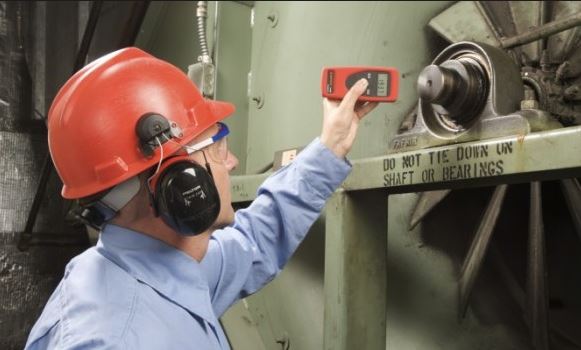
Choosing a Digital Photo Laser Tachometer
But not everything that gets measured is a roaring engine. Figuring out the right digital photo later tachometer for you specifically involves asking yourself about the kind of things you’re going to measure, and what degree of accuracy you need out of your measurements.
For instance, sometimes you need accurate measurements for slower rotations. Most digital photo laser tachometers can be adapted to slow-spinning measurements quite easily. Suppose you were measuring a large spinning pipe with a fairly slow 10RPM rotation. With the right tachometer, all you need to do is place 10 reflective spots evenly spaced along the shaft. The addition of those reflective spots will increase the rate of light received by the tachometer, allowing it to more rapidly respond to alterations in speed, even for very slowly spinning parts. But only if your tachometer is equipped for it.
Some people will want to consider alternative methods of measurement beyond lasers. Although non-contact measurement is an optimal solution for most tasks, a more versatile tachometer may include contact measurements as well. Whether or not you need that kind of versatility depends on what you intend to measure.
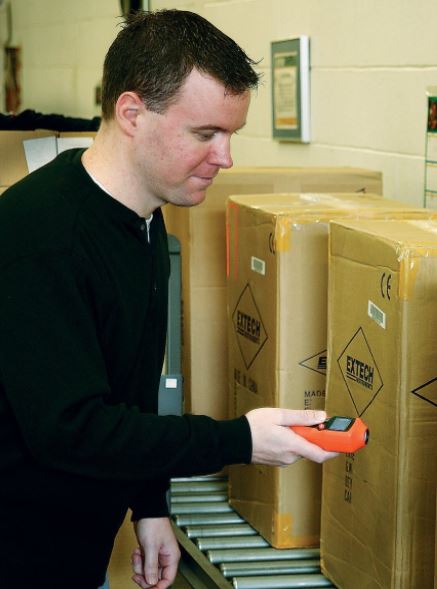
Measurement Accuracy
Although just about any beam of light will do, lasers tend to be used for their strength and accuracy. Stronger lasers require more energy, but are proportionally more accurate, especially over longer distances of measurement. Class I lasers are equipped for the kind of short-distance measurements that most people are going to be using a tachometer to take.
But the relatively low intensity of a class I laser also means they can’t offer you extreme degrees of accuracy. If a degree of scientific accuracy is non-negotiable for your non-contact measurements, you’ll want to find a device with a more powerful class II laser.
Time Saving Functionality
Digital photo laser tachometers can do more than just measure, they’re supposed to do all the heavy mathematical lifting as well. If you’re using a photo tachometer to monitor an engine spinning 1200 revolutions per minute, the tachometer will count the pulses it sees occurring during one second, do some simple multiplication, and the device will report 1200 revolutions.
But how easy is it to switch between measuring that engine and measuring a rotational belt, or a small spinning gear? A great tachometer should be as easy to use as pressing one or two buttons, without giving up your ability to customize measurements in the process.
REED Instruments R7100
The R7100 is a versatile instrument that’s ready to take both contact and non-contact measurements. Alongside its relatively average class I laser, the head of this device is equipped with a changeable array of contact adapters that can fit to measure contact rotational speed. Surface speeds are provided in meters per minute, making this device ideal for conveyor belts, belt motors, and or other elongated rotational systems.
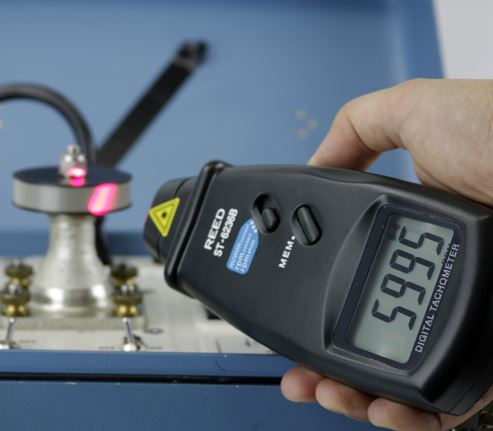
Accuracy and Precision
REED’s R7100 can take contact measurements ranging from 0.5 to 20,000 RPM, and surface speed measurements ranging from 0.5 to 2000 meters per minute. It also supports an incredibly wide maximum measurement range between 5 and 100K RPM. The class I laser provides a relatively long reach of 50 to 500mm from the instrument, allowing you to keep a safe distance from working machinery. And for precision, measurement accuracy us available within a 0.5 rotation margin of error.
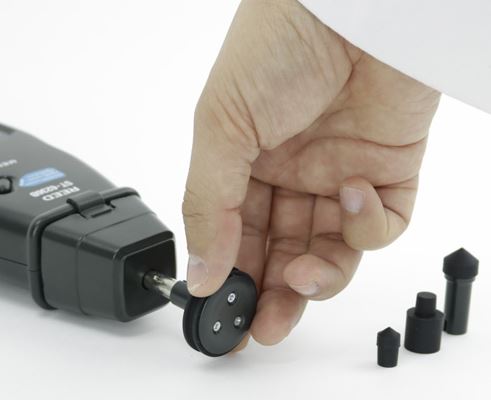
Build & Design
Although the R7100 uses a relatively ordinary laser to help identify your target, that laser is paired up with internal memory to maximize the ease of use of the R7100. The internal memory helps recall the maximum and minimum values of your measurements, as well as the last measurement you’ve taken. Features like that are very convenient when put to practical use, can save you time when writing things down, and allows you to take rapid measurements without having to stop to pencil each one down.
The five-digit LCD is equal measures clear and accurate, and is powered by four AA batteries. The R7100 includes a roll of reflective tape, small and large cone tip adapters, a funnel adapter, a wheel adapter, the necessary batteries, and a hard shell carrying case. Even with the adapters, the R7100 maintains an ultra-lightweight and portable design, weighing just under 7 ounces.
Extech 461920 Mini Laser Photo Tachometer Counter
Some lasers are better than others. The Extech 461920 uses a class II laser that’s approximately three times stronger than class I counterparts. Extra laser output translates into longer measurements than you’ll find with other tachometers, and greater accuracy over those distances. Although the Extech 461920 Mini Laser Photo Tachometer doesn’t support contact measurement features, it does have a higher degree of ranged precision than you’ll find in comparable instruments.
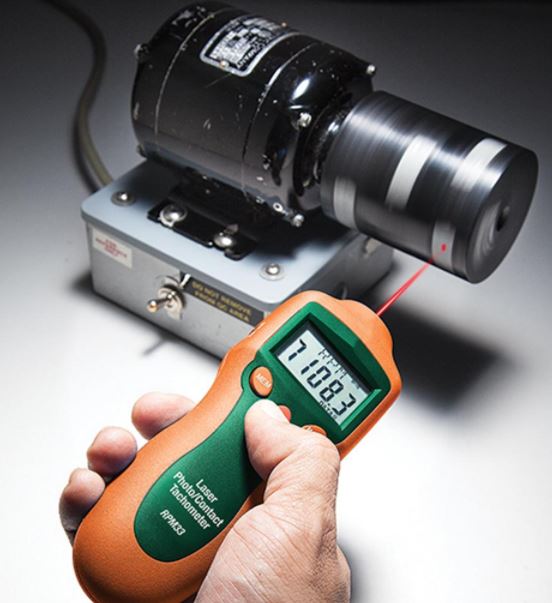
Accuracy and Precision
By merely glancing at this tachometer, the 5-digit LCD should give you a clue for the amount of accuracy you’re in for, which is a vast range between 2-100k RPM. As you may know, the further your tachometer gets from the object it’s measuring, the less accurate your measurement is going to be. But the Extech 461920 maintains its hyper-accurate measurement from as far as 20-inches away.
The maximum target distance is an average 500mm or 1.6ft, with a basic accuracy of plus or minus 0.05%. And like the R7100, this tachometer also supports minimum, maximum, and last measurement memory, which can be an essential part of keeping track of your data.
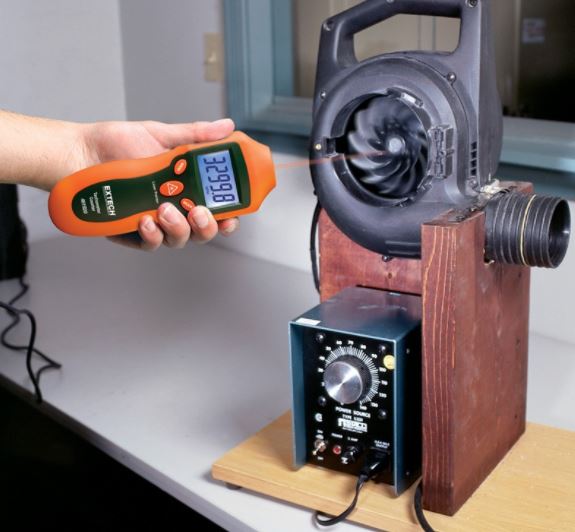
Build & Design
The build of the Extech 461920 Mini is optimally suited for rollers, fans, motors, and other commonly used processing equipment. The rugged and ergonomic design weighs a hefty 9.6 ounces, reflecting the quality of the laser. In terms of ease of use, an Extech tachometer is as simple as they come. Start by pressing the MODE button to select between REV of RPM, and then pointing the laser at reflective tape you’re wanting to test. Ta-da! You’re ready to receive your results immediately.
The Extech 461920 operates on an included nine-volt battery, and supports modern-looking bright backlighting that keeps your readings readable even in a dark garage. Apart from a 6-month warranty, there are few bonuses and extras to speak of. You won’t end up with a protective carrying case or any spare rolls of reflective tape. What you’re paying for is heavy hardware and nothing more.
Electronic Specialties 328 EZ Tach Plus
Not everyone needs industrial grade accuracy. If you’re working on the lawnmower in your garage rather than a space rocket in a lab, then you probably only need an instrument that’s modestly accurate. That tachometer is the Electronic Specialties 328 EZ Tach Plus. The 328 isn’t going to win any contests for strength or speed, but it’s an inexpensive option someone who needs a tachometer, but isn’t going to taking measurements every single day.
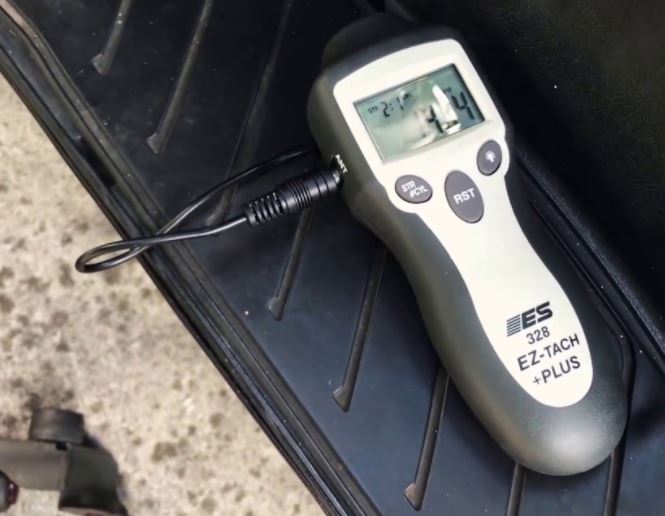
Accuracy and Precision
The 328 EZ Tach Plus uses an inductive sensor, which is a special kind of contact pickup that monitors the magnetic field of the thing you’re measuring. For the purposes of an ordinary vehicle engine or another small motor, an inductive pickup can provide an excellent approximation of an objects RPM.
As such, the EZ Tach Plus is capable of reading revolutions as high as 20,000 RPM. Your readings are accurate within 10 RPM, which won’t fly in an industrial setting, but is more than enough for someone taking readings of a generator, motorcycle, snowmobile, outboard, ATV, or similar device. Additionally, the 328 EZ Tach includes an optical wireless sensor that can work without the included cable. For circumstances where you can’t get the cable to contact, this sensor can help provide a good approximation of rotational speed, but the measurement won’t come close to the accuracy of a proper laser sensor.
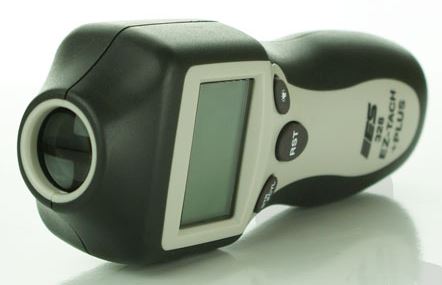
Build & Design
The 328 EZ Tach Plus uses a backlit LCD for readability in darker spaces, and further illumination is available thanks to a build-in LED flashlight that you can use while taking measurements. The 328 includes an inductive pickup cable, and the length of the cable is about 12 inches. For typical home purposes that should be enough, but does get your tachometer fairly close to whatever object you’re measuring. Finally, the EZ Tach Plus operates on a 9-volt battery that doesn’t come included, so you’ll want to be ready for that.
Choosing Between 3 Quality Tachometers
Sometimes you don’t need precision accuracy. The 328 EZ Tach Plus is suitable for equipment you’ll find laying around the average home, like a string trimmer or an automotive engine. It doesn’t offer remarkable accuracy, and it has significant lag between readings that makes this device unacceptable of industrial settings. But for the purposes of a hobby mechanic or casual at-home repairs, the 328 EZ Tach Plus is an inexpensive means of adding a pragmatic Tachometer in your toolkit.
For versatile readings, you want the REED Instruments R7100 Tachometer. It uses a combination laser and contact design that makes it a far more versatile instrument than the Extech. The included funnel, wheel, and cone adapters make REED well equipped for measuring common spinning parts. The R7100’s accuracy remains within half of a revolution, which should be accurate enough for all but the most stringent requirements.
For people who need pinpoint non-contact accuracy, there’s no substitute for a strong laser. The Extech 461920 Tachometer isn’t as versatile as the other instruments on this list, but it offers an unsurpassed accuracy of +/- 0.05%. If you need a high-precision digital photo laser tachometer, you’ll find no better price for the performance you’re getting out of the Extech.
Meet Ry, “TechGuru,” a 36-year-old technology enthusiast with a deep passion for tech innovations. With extensive experience, he specializes in gaming hardware and software, and has expertise in gadgets, custom PCs, and audio.
Besides writing about tech and reviewing new products, he enjoys traveling, hiking, and photography. Committed to keeping up with the latest industry trends, he aims to guide readers in making informed tech decisions.


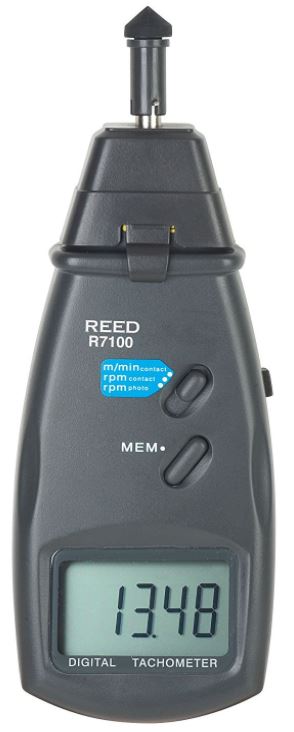
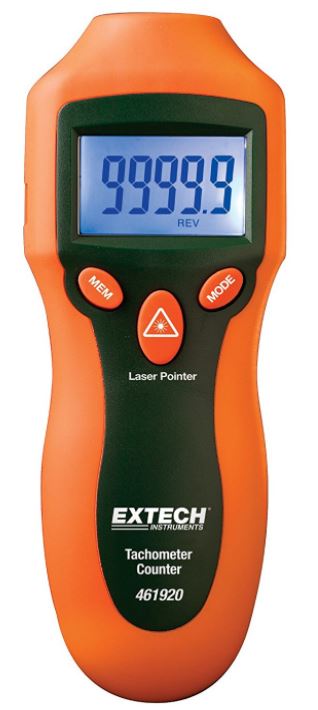
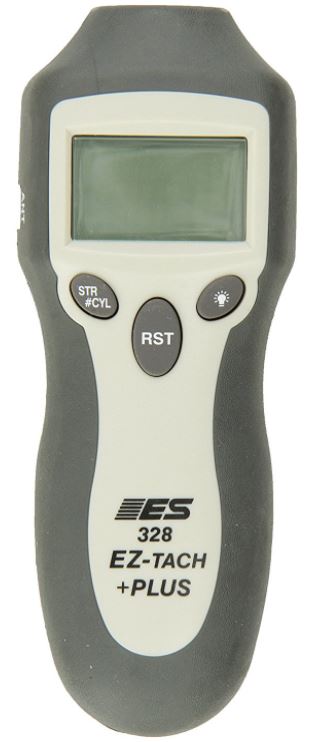
Hi .I wonder if you can help me? I need to measure a rotating wheel +- 1.5 mtr/sec speed.. This wheel supports a steel rope.It is commonly called a chairlift here in the mines in RSA. It has chairs clamped to the rope which carry people down the mine.
I need to test that the brakes are operating correctly and the best way to do this this is by calculating the peak deceleration rate from normal operating speed to stop.
is there a laser tachometer that is equipped with a pulse output that can interface with a laptop via a usb connection.
If not is there any other method or equipment handheld that can achieve this.